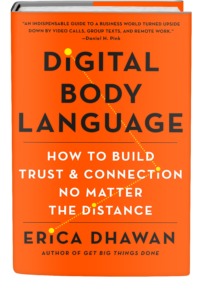Thankfully, the days are gone when leaders are prone to ignore the best ways to apply behavioral science in management. That’s because more and more often, the discoveries of science and the practices of leadership and management are converging. The two go hand in glove in the most successful organizations. For that reason, I wanted to invite Caroline Webb to be on the podcast.
Caroline is many things – a management consultant, economist, author, and leadership coach. She specializes in helping people understand the powerful lessons behavioral science brings to management and leadership, which results in a transformed way of living and working. During this conversation we speak about the insights from her book, “How to Have a Good Day: Harness the Power of Behavioral Science to Transform Your Working Life”.
[Tweet “Learn tips for applying #BehavioralScience for better #management and #leadership from @Caroline_Webber and @EDhawan on this episode of #MastersOfLeadership. #Leaders #GetBigThingsDone”]It’s vital for leaders to apply the findings of behavioral science in management
Behavioral science is a treasure trove of relevant information for leaders. Through its discoveries, we are able to understand exactly what is going on in the brains of people as various situations are happening. Do you see the impact of that kind of knowledge? As leaders, we can learn better ways to relate to and help those we work with when we understand better what’s going on in their minds.
Caroline is a very well-spoken, clear communicator about these issues, bringing the subject matter down to a level we can all understand and apply. Listen to this episode to discover real, science-based tips for becoming a better leader.
People get dumber when they get defensive
We’ve all seen the characterizations of old-style, bad leadership. Demands. Criticism. Berating diatribes. All of these are the kind of behavior none of us wants to have to endure from our leaders. Interestingly, behavioral science explains why – those approaches spark defensiveness, which in turn does specific things in the brain, actually making us less able to respond.
In Caroline’s Webb’s words, “We actually get dumber when we get defensive.” Can you imagine the difference it would make if those in management and leadership positions understood the ramifications of this kind of information? We could intentionally adjust our approach to confrontations, meetings, annual reviews – all to increase the likelihood of productive, helpful responses.
[Tweet “#BehavioralScience teaches us that people get dumber when they get defensive. Learn how to lead them better from @Caroline_Webber and @EDhawan on this episode of #MastersOfLeadership. #Leadership #GetBigThingsDone”]Putting yourself at a distance from the problem makes for clearer thinking
Every leader knows the difficulty of dealing with a crisis situation and leading a team through it. Stress can dominate – which makes for muddled thinking at best. Caroline recommends a very simple tactic which actually helps to clear the brain for better thinking. It’s called “distancing.”
She tells the story of one leader who was speaking to his team during a stressful situation. He asked them, “2 years from now, what will we wish we had done in this situation?” Do you see what he did? He was leading them all to distance themselves from the problem, to step outside the emotions of the moment to look at things from a fresh, wise perspective. Caroline says that distancing is a practice rooted in the findings of behavioral science, and those in management would do well to employ it.
Tips for developing empathy and understanding within remote teams
Even in the context of remote teams, there are powerful ways we can apply the lessons of behavioral science in management. One of the principles that has proven to yield great fruit is the practice of face to face meetings via video. Research shows that individuals are able to have greater degrees of empathy for others when visual cues are present. That means they need to actually SEE each other in order to pick up on things that are going on in the other person. A simple solution for digital teams is video. Caroline suggests that leaders of digital teams use video any chance they get to build more empathy and team connection.
Listen to this episode to hear the great insights Caroline has to share!
[Tweet “Tips for developing #empathy and understanding within #remote teams with @Caroline_Webber and @EDhawan on this episode of #MastersOfLeadership. #Leadership #GetBigThingsDone”]Outline of This Episode
- [0:48] Who is Caroline Webb?
- [1:37] The way Caroline defines leadership.
- [3:04] Why Caroline focused her book on using behavioral science to address practical issues in life and work
- [5:36] The simple practical steps we can all take based on behavioral science
- [8:31] Caroline’s favorite examples of how people are using her principles well
- [11:47] Actions we can take to stay balanced during the tough times
- [13:49] Challenges to making good connections when we work digitally at a distance
- [17:41] Generational differences don’t appear to be as much a reality as we thought
- [22:01] Emotional contagion is a real thing that impacts teams broadly
Resources & People Mentioned
- Caroline’s website – https://carolinewebb.co/
- www.HowToHaveAGoodDay.com – check into Caroline’s resources
- BOOK: How To Have A Good Day
- Caroline on Twitter: @Caroline_Webb
- Caroline on LinkedIn
- Caroline on Facebook
- BOOK: Predictably Irrational
- BOOK: Thinking Fast and Slow
Connect with Erica
Erica@cotentialgroup.com
